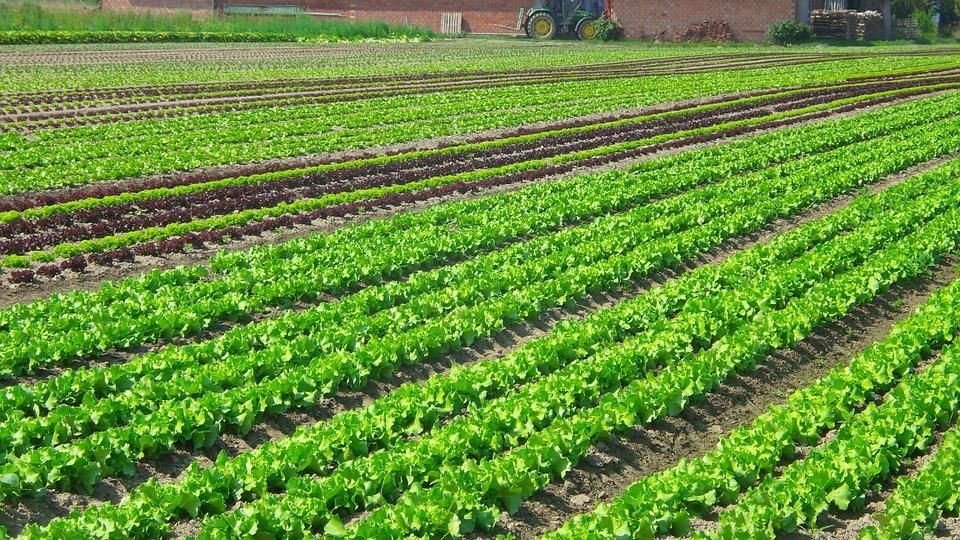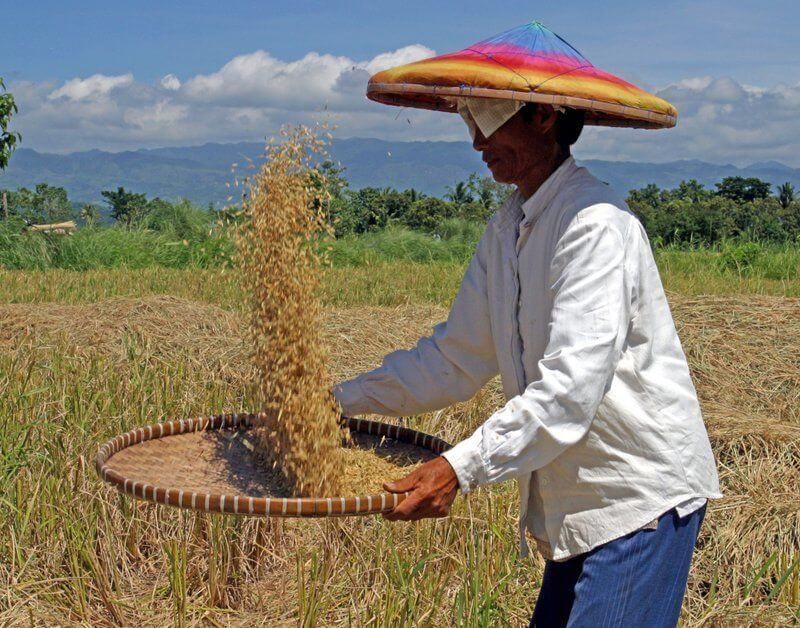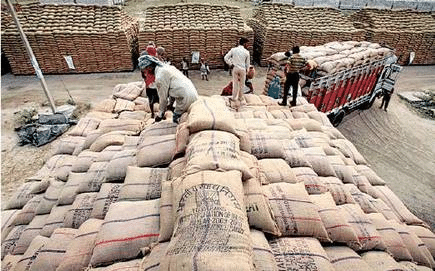Very Short Answers - Crop Production and Management, Science, Class 8 PDF Download
VERY SHORT ANSWER TYPE QUESTIONS
Ques 1: How green plants synthesise their own food?
Ans: Green plants synthesise their own food by the process of photosynthesis.
 Fig: Green plants
Fig: Green plants
Ques 2: Where do animals get their own food?
Ans: Animals get their food from plants and other animals.
Ques 3: What do you mean by crop?
Ans: When plants of same kind are grown and cultivated at one place on a large scale, it is called crop.
Ques 4: Name two broad cropping patterns.
Ans: (i) Kharif crops (ii) Rabi crops.
Ques 5:Mention the names of two kharif crops.
Ans: (i) Paddy crops (ii) Maize crops.
Fig: Paddy fieldsQues 6: Write the names of two rabi crops.
Ans: (i) Wheat crops (ii) Gram crops.
Ques 7: What are agricultural practices?
Ans: The various steps to grow crops and storage of grains are collectively known as agricultural practices.
Ques 8: What do you mean by the tilling or ploughing?
Ans: The process of loosening and turning of the soil is called tilling or ploughing.
Ques 9: What is plough?
Ans: The device used for tilling or ploughing is called plough.Fig: Plough
Ques 10: Name two materials used to make a plough.
Ans: Wood and iron.
Ques 11: What are crumbs?
Ans: The big pieces of soil are called crumbs.
Ques 12: Name some tools used in agriculture.
Ans: Plough, hoe, cultivator.
Ques 13: Write two uses of plough.
Ans: (i) It is used for tilling of soil.
(ii) It is used to remove the weeds.
Ques 14: Write two uses of hoe.
Ans: (i) It is used to remove the weeds.
(ii) It is used to loosen the soil.Fig: Hoe
Ques 15: What is traditional tool used for sowing?
Ans: The tool used traditionally for sowing is funnel-shaped tool.
Ques 16: What is manure?
Ans: Manure is an organic substance obtained from the decomposition of plant and animal wastes.
Ques 17: What do you mean by manuring?
Ans: The process of providing manure to replenish the soil with nutrients is called manuring.
Ques 18: What are fertilisers?
Ans: Fertilisers are the chemical substances which are rich in a particular nutrient.
Ques 19: Which is better to use manure or the fertilizers?
Ans: Manure is better than the fertilizers.
Ques 20: What do you mean by the term irrigation?
Ans: The supply of water to crops at different intervals is called irrigation.
Ques 21: Is the time and frequency of irrigation same for all the crops?
Ans: The time and frequency of irrigation varies from crop to crop.
Ques 22: Write some sources of irrigation.
Ans: Wells, tubewells, ponds, rivers and canals are the main sources of irrigation.
Ques 23: Mention traditional methods of irrigation.
Ans: (i) Moat
(ii) Chain pump
(iii) Dhekli
(iv) Rahat.
Ques 24: What is the use of pumps?
Ans: Pumps are commonly used for lifting water.
Ques 25: What are the modern methods of irrigation?
Ans: (i) Sprinkler system
(ii) Drip system.Fig: Sprinklers
Ques 26: What are weeds?
Ans: The unwanted plants growing naturally with the main crop are called weeds.
Ques 27: What is weeding?
Ans: The process of removal of weeds is called weeding.
Ques 28: What are weedicides?
Ans: The chemical substances which are used to control the weeds are called weedicides.
Ques 29: Name a weedicide which is commonly used by the farmers.
Ans: The weedicides commonly used by the farmers are 2, 4‑D.
Ques 30: Define harvesting.
Ans: The cutting of crop after it is mature is called harvesting.
Ques 31: What is threshing?
Ans: The process by which grains are separated from the chaff is called threshing.
Ques 32: Name a machine which is combined harvester and thresher.
Ans: Combine.
Ques 33: What is winnowing?
Ans: It is a process of separation of grain and chaff. Fig: Winnowing
Fig: Winnowing
Ques 34: Name some harvest festivals.
Ans: Pongal, Baishakhi, Nabanya, and Bihu are some harvest festivals.
Ques 35: What do you mean by storage?
Ans: The process to keep grains for a longer time by saving them from moisture, insects, rats and microorganisms is called storage.
Ques 36: Why is it necessary to dry grains before storage?
Ans: The grains are properly dried in the sun to reduce the moisture in them. This prevents the attack by insects, pests, fungi and bacteria.
Ques 37: Name two devices which are used to store grains at large scale.
Ans: (i) Silos
(ii) Granaries. Fig: Granaries
Fig: Granaries
Ques 38: Name some animals which provide food.
Ans: Cow, buffalo, hen, pig and fish, etc.
Ques 39: Name two milk yielding animals.
Ans: (i) Cow
(ii) Buffalo. Fig: Cow: milk yielding animal
Fig: Cow: milk yielding animal
Ques 40: Mention the name of three animals which provide meat.
Ans: Goat, pig and fish.
Ques 41: What do you mean by animal husbandry?
Ans: Animal husbandry is the process to provide proper food, shelter and care to animals at large scale.
Ques 42: Name a vitamin which is found in cod liver oil.
Ans: Vitamin D.
FAQs on Very Short Answers - Crop Production and Management, Science, Class 8
| 1. What are the different methods of crop production and management? |  |
| 2. How does irrigation help in crop production and management? |  |
| 3. What is the importance of fertilization in crop production and management? |  |
| 4. What are the different types of pests that affect crop production and how can they be managed? |  |
| 5. How does harvesting play a role in crop production and management? |  |




















